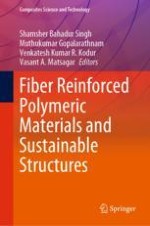This book deals with the introduction of various kinds of advanced composite materials such as carbon fiber-reinforced polymer (CFRP), glass fiber-reinforced polymer (GFRP), aramid fiber-reinforced polymer (AFRP), and basalt fiber-reinforced polymer (BFRP). This book covers the advantages and disadvantages of these advanced composite materials. The primary advantages, such as high specific strength and stiffness, of advance composite materials result in lighter and durable structures. On the other hand, its linear elastic behavior till failure has been highlighted as the main disadvantage for their structural applications. This book also highlights the various forms in which the FRP components are tailored and stacked up to optimize its strength and stiffness to deliver the high-performance structural as well as non-structural components in its real-life application. The various forms in which FRP materials are developed are described such as uni-directional, cross-ply, angle-ply, hybrid, and functionally graded composites. In addition, various forms in which these materials stacked and/ bonded to fabricate the various structural and non-structural components are described. Most importantly, techniques to extract plant-based cellulosic fibers and its application to fabricate the various forms of sustainable composite products are described. In addition, development of nano-particle-enforced cellulosic fibers for sustainable industrial products has also been presented. Furthermore, the use of advanced composites and natural fiber-based composites has been demonstrated for repair, rehabilitation, and retrofitting of deficient structural systems. Moreover, the comprehensive overview of the state-of-the-art research on the test methods for material characterization at room and elevated temperature is presented which will be of high interest to scientists, researchers, students, and engineers working in the fields of composite materials such as FRPs and other forms of composites such as fiber-reinforced concrete (FRC). This book is also helpful for undergraduate, masters, and most importantly Ph.D. research scholars for developing their fundamental understanding on advanced composite materials and their applications in construction as well as industrial sectors.
